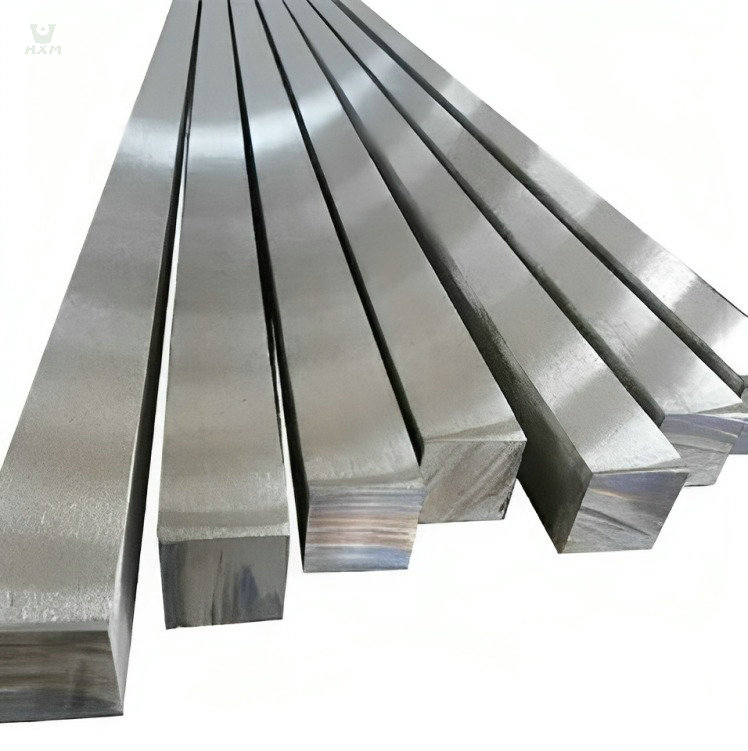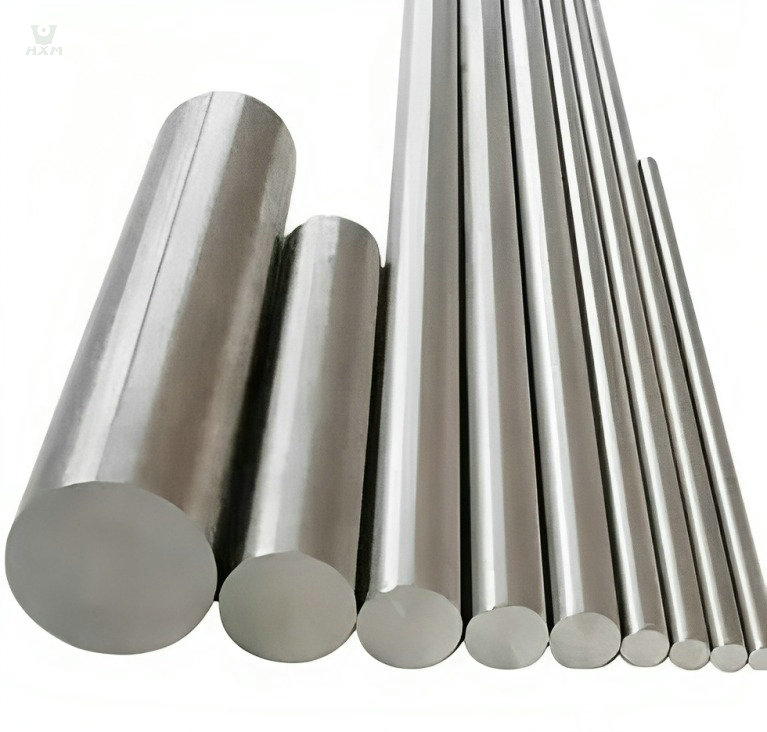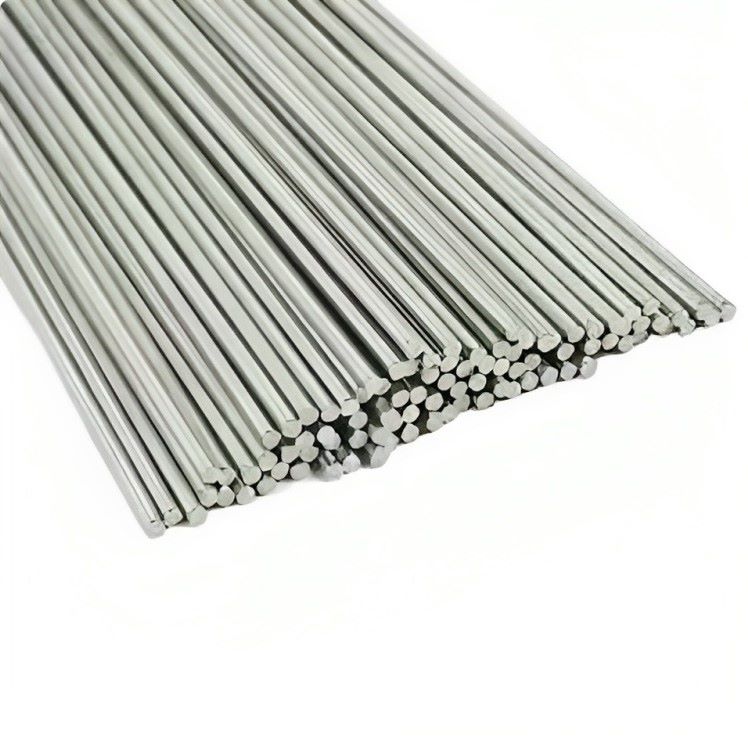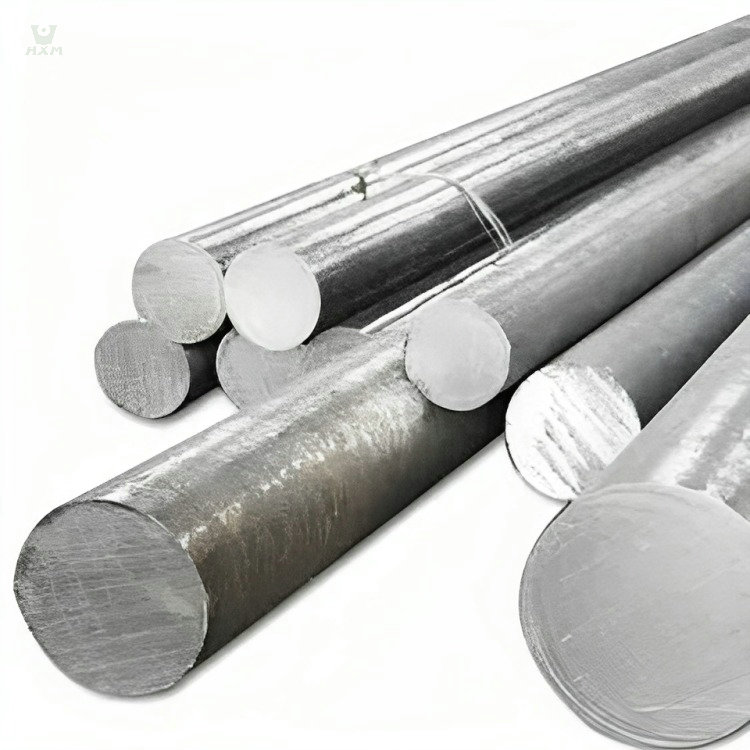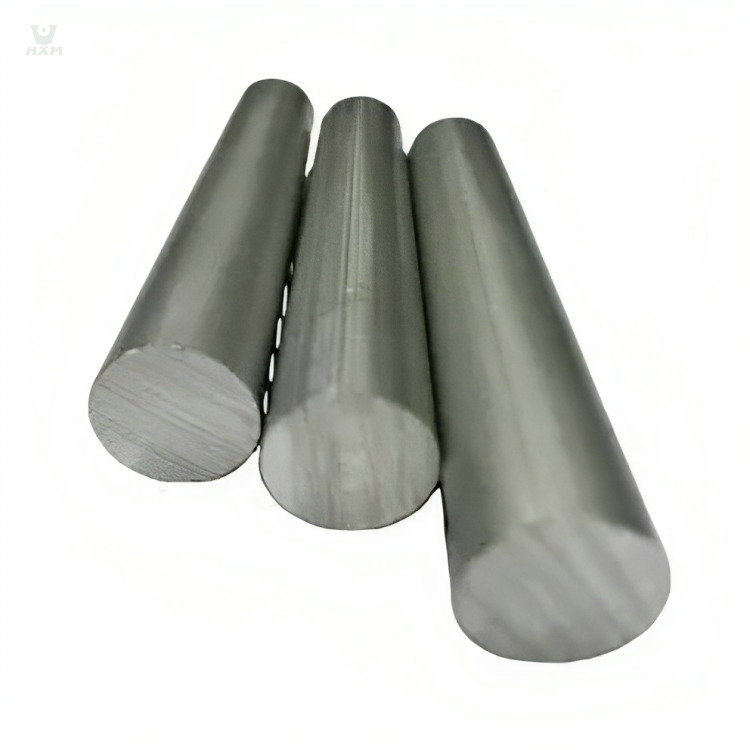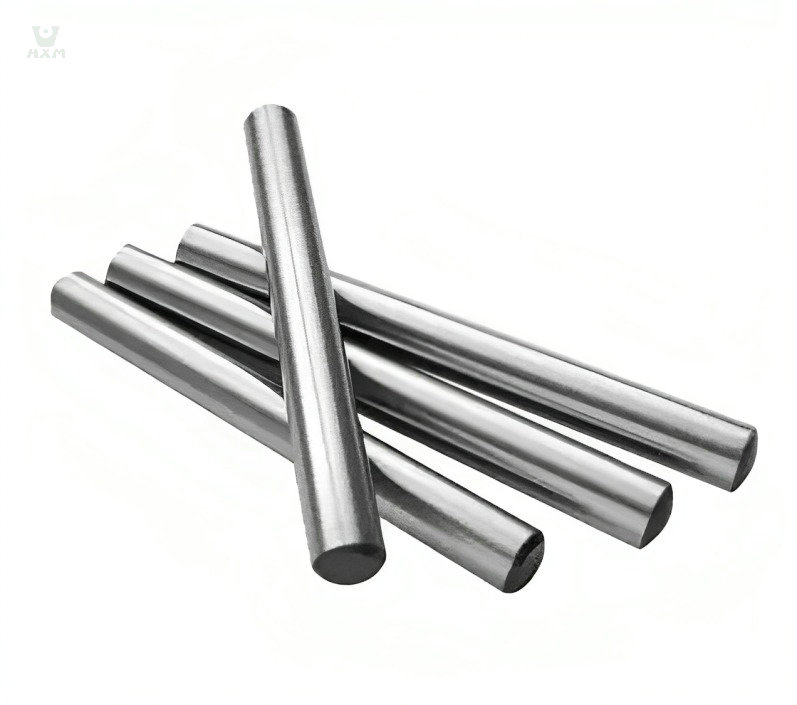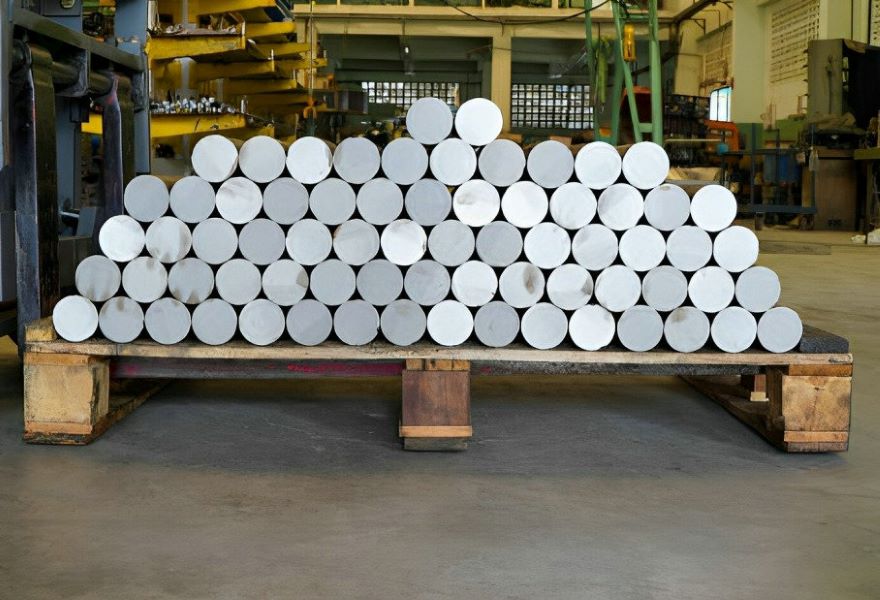
410 Stainless Steel Bar Supplier in China
Diameter: 3mm-480mm, 1/8″ to 2 1/4″
Standard: GB1220, ASTM A484/484M, EN 10060/ DIN 1013 ASTM A276, EN 10278, DIN 671
Shape: round, flat, square, angle, hexagonal
Finish: Black, NO.1, mill finish, cold draw, H9, H11
Product Description Of 410 Stainless Steel Bar
Introducing 410 Stainless Steel Bar, a robust and hardenable martensitic stainless steel alloy widely recognized for its versatile applications and exceptional properties. Comprising a minimum of 11.5% chromium, this alloy boasts an elevated carbon content, setting it apart from other stainless steels. Its inherent corrosion resistance is well-suited for non-aggressive environments, making it an ideal choice for applications like knife blades, scissors, and kitchen utensils. Beyond the culinary world, 410 stainless steel plays a pivotal role in industrial domains, finding utility in valves, pumps, pipe fittings, and equipment for petroleum refining and chemical processing.
This material extends its versatility to firearm barrels and components, fasteners, including screws, bolts, nuts, and various hardware and fixing applications. Its strength and high elastic modulus make it perfect for forming springs, spring washers, Belleville washers, and an array of components. Whether in the realm of power generation, mechanical engineering, or general hardware, 410 Stainless Steel Bar shines as a dependable choice, not only for its strength but also for the ability to enhance its corrosion resistance through hardening, tempering, and polishing. Unleash the potential of 410 stainless steel in your projects and applications, where durability and versatility are paramount.
specification Of 410 Stainless Steel Bar
chemical composition of 410 stainless steel bar
| Element | Minimum (%) | Maximum (%) |
|---|---|---|
| Carbon (C) | 0.08 | 0.15 |
| Chromium (Cr) | 11.5 | 13.5 |
| Manganese (Mn) | 0 | 1 |
| Silicon (Si) | 0 | 1 |
| Phosphorus (P) | 0 | 0.04 |
| Sulfur (S) | 0 | 0.03 |
physical composition of 410 stainless steel bar
| Property | Value |
|---|---|
| Density | 7.75 g/cm³ |
| Melting Range | 1480 – 1530°C (2700 – 2790°F) |
| Electrical Resistivity | 550 nΩ·m |
| Thermal Conductivity | 24 W/(m·K) |
| Specific Heat Capacity | 460 J/(kg·K) |
| Magnetic Properties | Ferromagnetic (paramagnetic above Curie point) |
mechanical composition of 410 stainless steel bar
| Property | Value |
|---|---|
| Density | 7.75 g/cm³ |
| Melting Range | 1480 – 1530°C (2700 – 2790°F) |
| Electrical Resistivity | 550 nΩ·m |
| Thermal Conductivity | 24 W/(m·K) |
| Specific Heat Capacity | 460 J/(kg·K) |
| Magnetic Properties | Ferromagnetic (paramagnetic above Curie point) |
features Of 410 Stainless Steel Bar
410 stainless steel bar exhibits a notable level of corrosion resistance, especially in non-aggressive environments, where it comes into contact with non-acidic water and wet air. This resistance can be attributed to its chemical composition, which includes a minimum of 11.5% chromium. Chromium forms a protective oxide layer on the surface of the steel when exposed to oxygen. This oxide layer acts as a barrier, preventing further corrosion of the underlying metal.
In non-acidic water and wet air conditions, 410 stainless steel rod remains largely unscathed by the corrosive elements present. It resists the formation of rust or corrosion, making it a suitable choice for applications in which exposure to moisture or mildly corrosive substances is expected. This property is particularly advantageous in various industries where components are constantly exposed to environmental factors that would deteriorate less corrosion-resistant materials.
It’s worth noting that while 410 stainless steel rod demonstrates good corrosion resistance in these conditions, it may not be as suitable for highly aggressive or acidic environments, where alternative stainless steel grades with higher chromium content might be preferred for even greater resistance.
410 stainless steel rod is renowned for its ability to be further enhanced in terms of corrosion resistance through specific processes such as hardening, tempering, and polishing. The inherent corrosion resistance of 410 stainless steel can be substantially improved when subjected to these treatments.
Hardening is a process that involves heating the steel to elevated temperatures and then rapidly cooling it, typically through quenching. This strengthens the material and also refines its grain structure, making it more resistant to corrosion.
Tempering, following hardening, is a controlled reheating process where the steel is subjected to specific temperatures. This process further improves the steel’s toughness and ductility, and it also contributes to its overall corrosion resistance.
Polishing, which can follow hardening and tempering, involves smoothing and finishing the surface of the steel. This not only enhances the appearance but also aids in improving the material’s corrosion resistance. A smoother surface is less prone to the accumulation of contaminants or corrosion-inducing elements.
These combined processes can make 410 stainless steel rod more resistant to corrosion, particularly in applications where it is exposed to various corrosive agents. It is important to note that the specific details of these processes and their effectiveness can vary based on the exact conditions and requirements of the application. This versatility and capacity for enhancement make 410 stainless steel a valuable choice for components and structures in industries where corrosion is a primary concern.
410 stainless steel is distinguished by its notable composition, which includes a minimum of 11.5% chromium and a comparatively higher carbon content compared to many other stainless steel alloys. This specific composition plays a crucial role in defining its properties and applications.
Chromium Content: The minimum 11.5% chromium content is significant because chromium is the key alloying element in stainless steel. It contributes to the formation of a passive oxide layer on the surface of the steel. This oxide layer acts as a protective barrier, providing excellent corrosion resistance. In the case of 410 stainless steel, the higher chromium content enhances its resistance to corrosion in various environments.
Carbon Content: The elevated carbon content, while not as high as in some other martensitic stainless steels, allows for the hardening of the material. The carbon content enables heat treatment processes like quenching and tempering, which are essential for achieving the desired combination of hardness, strength, and corrosion resistance in 410 stainless steel.
The synergy between the high chromium content and the specific carbon level gives 410 stainless steel its unique properties, making it well-suited for applications where a balance of corrosion resistance and hardness is required. This includes applications in the manufacturing of components like cutlery, valves, pump parts, and fasteners, where resistance to corrosion and wear is paramount. The understanding of these composition-related characteristics is fundamental to harnessing the full potential of 410 stainless steel in various industries.
application Of 410 Stainless Steel Bar
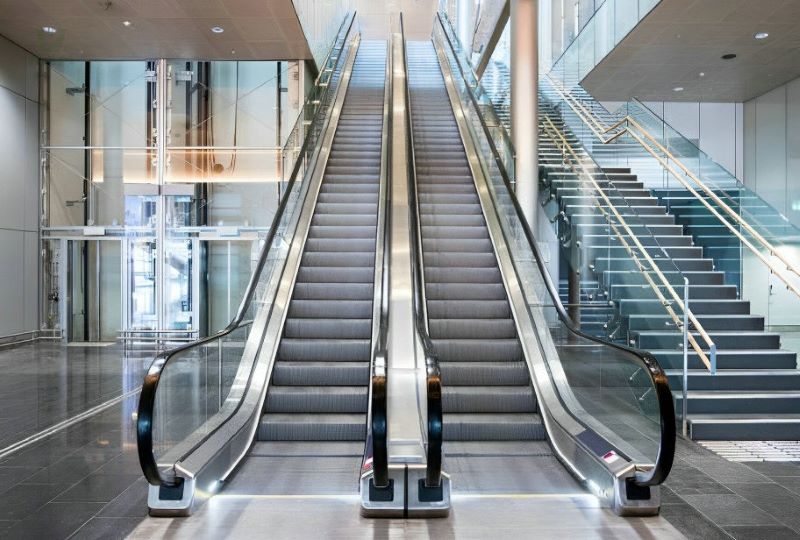
Escalators and Elevators
In the construction of escalators and elevators, 410 stainless steel bar is employed for its exceptional corrosion resistance and durability. Components like handrails, support brackets, and structural elements are often made from 410 stainless steel bar due to its ability to withstand the demands of heavy usage in various environments.
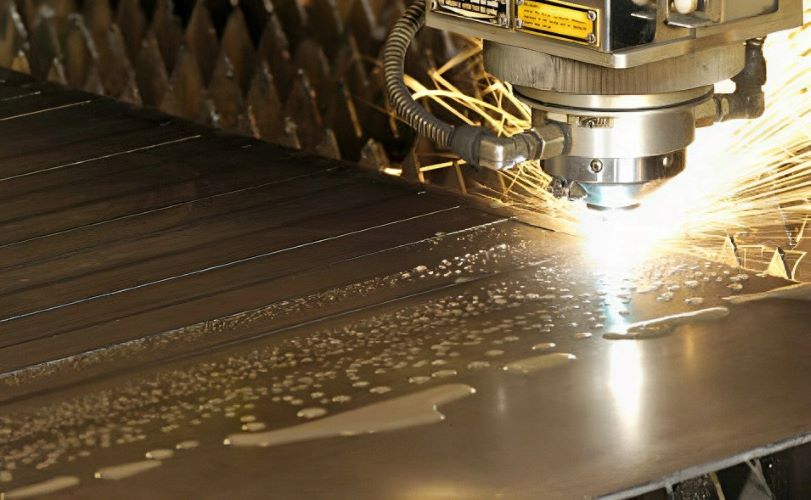
Tool Production
410 stainless steel's combination of high hardness and good strength makes it an ideal material for tool production. Tools like cutting blades, saws, drill bits, and chisels are frequently made from 410 stainless steel bar due to its ability to retain a sharp edge and resist wear during use.
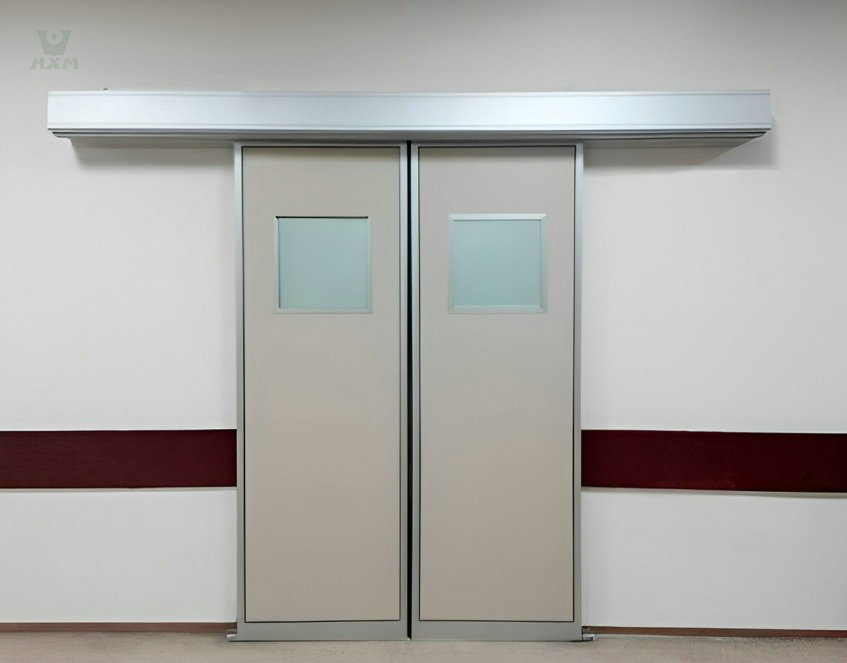
Doors and Furniture
410 stainless steel bar finds extensive use in the production of doors and furniture. Its remarkable wear resistance makes it an excellent choice for crafting handles, hinges, and decorative elements on doors. In the furniture industry, it is often used for manufacturing hardware like drawer handles, knobs, and sturdy chair and table legs.
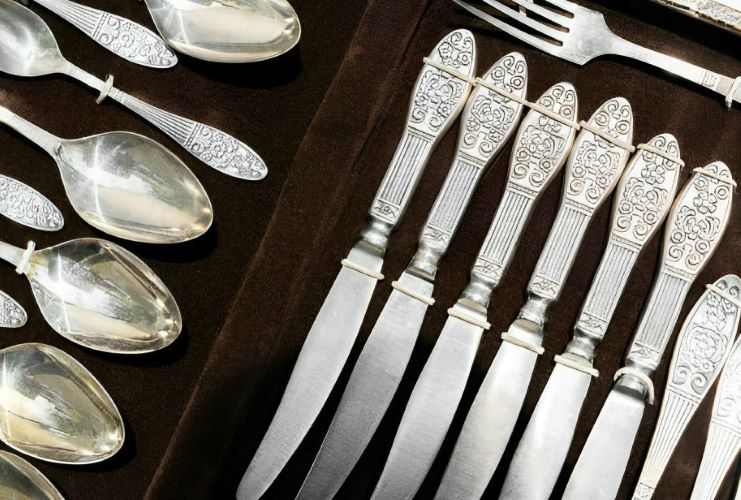
Kitchen Utensils
The heat resistance and corrosion resistance of 410 stainless steel make it a preferred material for manufacturing kitchen utensils. Cutlery such as knives, forks, and spoons benefit from its ability to maintain sharpness and resist staining or corrosion when exposed to various food and cleaning agents.
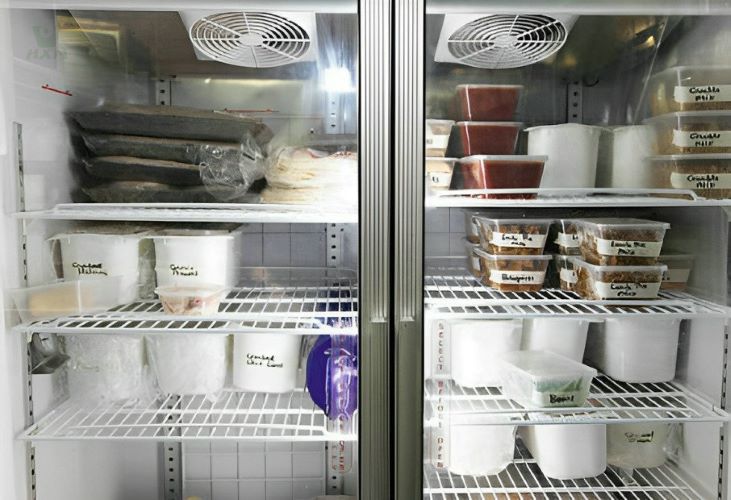
Refrigerators and Cold Rooms
410 stainless steel is well-suited for components used in refrigerators and cold rooms. It can withstand the low temperatures and moisture levels commonly encountered in these environments. Thus, it is used for constructing shelving, racks, and frames in refrigeration units, ensuring durability and hygiene.
FAQ
410 stainless steel bars and 430 stainless steel bars are two common stainless steel alloys, but they have notable differences:
Chemical Composition: The primary distinction lies in their chemical composition. 410 stainless steel contains a minimum of 11.5% chromium and relatively elevated carbon content, making it a martensitic stainless steel. In contrast, 430 stainless steel has a lower chromium content of about 16-18% and is ferritic in nature. This variance in composition contributes to their distinct properties.
Corrosion Resistance: 410 stainless steel offers better corrosion resistance compared to 430 in non-aggressive conditions, such as exposure to non-acidic water and wet air. It is suitable for applications where corrosion resistance is required but not in highly corrosive environments.
Strength and Durability: 410 stainless steel provides superior strength and hardness, making it a preferred choice for applications where higher mechanical properties are needed. It’s commonly used in manufacturing tools, cutlery, and various industrial components.
Magnetic Properties: Both alloys are magnetic, but 430 stainless steel tends to exhibit stronger magnetic properties due to its ferritic structure.
Applications: 410 stainless steel bars are often utilized in applications where strength, corrosion resistance, and durability are required, such as in manufacturing tools, kitchen utensils, and industrial components. On the other hand, 430 stainless steel is commonly used in applications where corrosion resistance is not a critical factor, such as decorative trim, sinks, and some appliances.
In summary, while both 410 and 430 stainless steel bars have their uses, 410 excels in terms of strength and corrosion resistance in milder conditions, making it a versatile choice for various applications. It’s essential to consider the specific requirements of your project when choosing between these two stainless steel types. As a stainless steel bar supplier, we can provide guidance on the most suitable option for your needs.
The heat treatment process for 410 stainless steel bars is a critical aspect of enhancing their properties. It typically involves the following steps:
Annealing: The first step is to heat the 410 stainless steel bars to a specific temperature range, typically between 1600°F and 1850°F (871°C to 1010°C). This process is known as annealing and is used to remove any residual stresses and soften the material for improved machinability.
Quenching: After annealing, the bars are rapidly quenched in oil, air, or water. This quenching process helps to harden the stainless steel.
Tempering: To achieve the desired balance of hardness and toughness, the bars are then tempered. This step involves reheating the bars to a lower temperature range, typically between 300°F and 800°F (149°C to 427°C). The specific tempering temperature will depend on the desired properties. Lower temperatures result in higher hardness, while higher temperatures provide better toughness.
Aging (Optional): In some cases, an additional aging process may be employed to further enhance the properties of the stainless steel bars.
The heat treatment process for 410 stainless steel bars is crucial for achieving the desired combination of hardness, strength, and corrosion resistance. As a stainless steel bar supplier, we have the expertise and facilities to provide 410 stainless steel bars that meet your specific heat treatment requirements, ensuring they are optimized for your intended applications.
Maintaining the appearance of 410 stainless steel bars in daily upkeep is essential to prolong their lifespan and preserve their aesthetic appeal. Here are some practical steps, with guidance from a stainless steel bar supplier:
Regular Cleaning: Clean the bars with a mild detergent or a solution of water and vinegar. Avoid harsh abrasives or chlorine-based cleaners that can damage the stainless steel surface.
Directional Cleaning: Wipe the bars in the direction of the grain (if present) to prevent potential scratching or damage.
Soft Cloth or Sponge: Use a soft, non-abrasive cloth or sponge to clean the bars. Microfiber cloths work well for polishing and removing fingerprints.
Rinse and Dry: After cleaning, rinse the bars thoroughly with clean water and then dry them with a soft, clean cloth to prevent water spots or streaks.
Stainless Steel Cleaner: Consider using a stainless steel cleaner specifically designed for maintaining stainless steel surfaces, which can enhance shine and provide a protective layer.
Avoid Harsh Chemicals: Avoid contact with strong acids, strong bases, and harsh chemicals as they can corrode or damage the stainless steel.
Avoid Scratches: Be mindful of abrasive materials or abrasive cleaning tools that can scratch the surface. Always use gentle, non-scratch cleaning implements.
Frequent Maintenance: Regularly inspect and maintain your 410 stainless steel bars to address any issues promptly.
By following these guidelines, you can ensure that your 410 stainless steel bars maintain their appearance and continue to perform well over time. Consulting with a stainless steel bar supplier can provide you with further recommendations and solutions tailored to your specific maintenance needs.
410 stainless steel bars are well-suited for manufacturing various types of tools due to their excellent combination of hardness, corrosion resistance, and strength. Tools that can be manufactured using 410 stainless steel bars include:
Cutting Tools: 410 stainless steel is used to create cutting tools such as knives, scissors, blades, and shears. Its high hardness ensures these tools maintain a sharp edge.
Hand Tools: Hand tools like wrenches, screwdrivers, pliers, and hand saws can be manufactured from 410 stainless steel, as it provides durability and corrosion resistance.
Power Tools: Components in power tools, such as drill bits and saw blades, benefit from the hardness and wear resistance of 410 stainless steel.
Industrial Equipment: Parts for industrial equipment and machinery, including gears, couplings, and shafts, can be made from 410 stainless steel due to its mechanical strength.
Cutlery: In the kitchen, cutlery items such as forks, spoons, and serving utensils are often crafted from 410 stainless steel because of its resistance to staining and corrosion.
Garden Tools: Tools like gardening shears, pruners, and shovels can be made from 410 stainless steel to withstand outdoor exposure.
Fasteners: Various types of fasteners, including screws, bolts, nuts, and washers, are manufactured from 410 stainless steel for their combination of strength and corrosion resistance.
Springs: Springs in various applications, such as automotive and industrial, are created using 410 stainless steel due to its high tensile strength and elasticity.
Hardware and Fixings: Items like hinges, locks, and brackets for doors, cabinets, and windows often utilize 410 stainless steel for its corrosion-resistant properties.
Aerospace Tools: Some specialized aerospace tools and components require the durability and corrosion resistance provided by 410 stainless steel bars.
By consulting a stainless steel bar supplier, you can obtain specific guidance on using 410 stainless steel bars for your tool manufacturing needs, ensuring that the material properties are optimized for the intended application.
The cost of 410 stainless steel can vary depending on factors such as market conditions, demand, and supplier pricing. In general, 410 stainless steel is considered to be more cost-effective compared to some other stainless steel types, such as the high-nickel alloys like 304 or 316 stainless steel.
While 410 stainless steel offers good corrosion resistance and is hardenable, it contains less nickel, which is a more expensive alloying element found in other stainless steel grades. This often makes 410 stainless steel a more budget-friendly option, especially when high corrosion resistance in aggressive environments is not the primary requirement.
It’s important to consult a stainless steel bar supplier or manufacturer to obtain precise pricing information for 410 stainless steel bars, as costs may fluctuate based on the specific market conditions and product specifications. These suppliers can offer valuable insights into cost-effective solutions and help you select the right stainless steel type for your particular application, taking into consideration both performance and budgetary considerations.
410 stainless steel bars are well-suited for manufacturing various types of tools due to their excellent combination of hardness, corrosion resistance, and strength. Tools that can be manufactured using 410 stainless steel bars include:
Cutting Tools: 410 stainless steel is used to create cutting tools such as knives, scissors, blades, and shears. Its high hardness ensures these tools maintain a sharp edge.
Hand Tools: Hand tools like wrenches, screwdrivers, pliers, and hand saws can be manufactured from 410 stainless steel, as it provides durability and corrosion resistance.
Power Tools: Components in power tools, such as drill bits and saw blades, benefit from the hardness and wear resistance of 410 stainless steel.
Industrial Equipment: Parts for industrial equipment and machinery, including gears, couplings, and shafts, can be made from 410 stainless steel due to its mechanical strength.
Cutlery: In the kitchen, cutlery items such as forks, spoons, and serving utensils are often crafted from 410 stainless steel because of its resistance to staining and corrosion.
Garden Tools: Tools like gardening shears, pruners, and shovels can be made from 410 stainless steel to withstand outdoor exposure.
Fasteners: Various types of fasteners, including screws, bolts, nuts, and washers, are manufactured from 410 stainless steel for their combination of strength and corrosion resistance.
Springs: Springs in various applications, such as automotive and industrial, are created using 410 stainless steel due to its high tensile strength and elasticity.
Hardware and Fixings: Items like hinges, locks, and brackets for doors, cabinets, and windows often utilize 410 stainless steel for its corrosion-resistant properties.
Aerospace Tools: Some specialized aerospace tools and components require the durability and corrosion resistance provided by 410 stainless steel bars.
By consulting a stainless steel bar supplier, you can obtain specific guidance on using 410 stainless steel bars for your tool manufacturing needs, ensuring that the material properties are optimized for the intended application.
The cost of 410 stainless steel can vary depending on factors such as market conditions, demand, and supplier pricing. In general, 410 stainless steel is considered to be more cost-effective compared to some other stainless steel types, such as the high-nickel alloys like 304 or 316 stainless steel.
While 410 stainless steel offers good corrosion resistance and is hardenable, it contains less nickel, which is a more expensive alloying element found in other stainless steel grades. This often makes 410 stainless steel a more budget-friendly option, especially when high corrosion resistance in aggressive environments is not the primary requirement.
It’s important to consult a stainless steel bar supplier or manufacturer to obtain precise pricing information for 410 stainless steel bars, as costs may fluctuate based on the specific market conditions and product specifications. These suppliers can offer valuable insights into cost-effective solutions and help you select the right stainless steel type for your particular application, taking into consideration both performance and budgetary considerations.
recent stainless steel bar products
Get In touch
Ready to Elevate Your Projects? Dive into our Stainless Steel Collection and Submit Your Specifications Today!
Phone/WhatsApp/WeChat:
+86 13052085117
Email: [email protected]
Address: RM557, NO.1388 Jiangyue Road, Shanghai China


